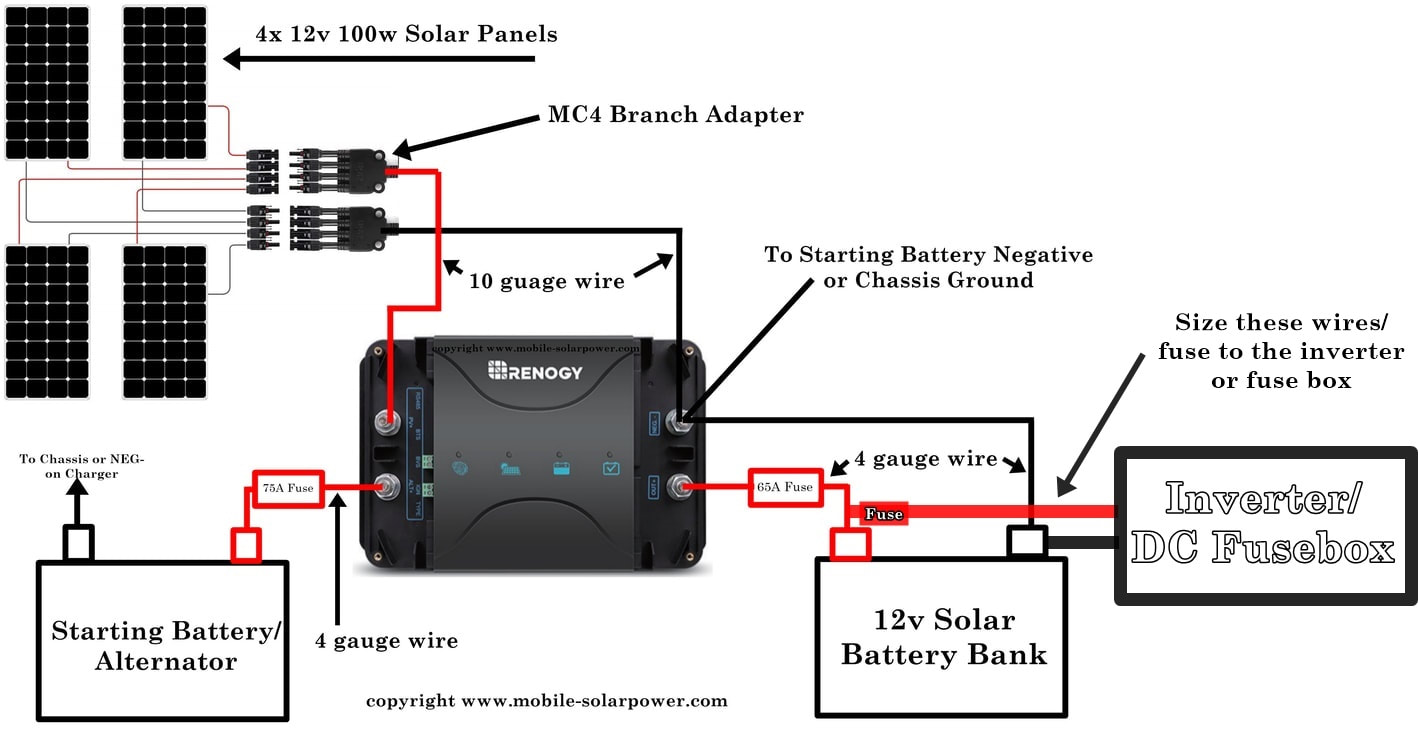PhotonSailor
New Member
- Joined
- Jul 13, 2020
- Messages
- 25
Hello All,
Am wondering if the following situation can this damage my equipment?
Am using Will Prowse blueprint - 400 Watt Solar Package w/ Alternator Charging
See

I have 3 circuit breakers with an ON/OFF switch.
* 250 Amp circuit breaker - Between the battery bank, inverter, DC fusebox and 70 Amp CB.
* 70 Amp circuit breaker - Between the 250 CB and the charge controller.
* 80 Amp circuit breaker - Between the charge controller and the positive terminal of my starter battery.
See
Now here is the situation.
I am outside with my vechile, there are Sun Power solar panels on the roof of vehicle and the sun is shining brightly.
Before I do any work on the system, I throw the ON/OFF switches on all circuit breakers to the OFF position.
But the solar panels are directly connected to the charge controller and the battery bank is not connected as I threw the switch on the 250 circuit breaker to the OFF position.
So the panels are collecting and sending electrical energy to the charge controller but the charge controller has nowhere to store the energy, battery bank disconnected due to circuit breaker in OFF position.
So, can this damage my system?
Should I place a circuit breaker (or something else) with an ON/OFF switch between the the solar panels and the charge controller?
Thank you for any assistance!
Am wondering if the following situation can this damage my equipment?
Am using Will Prowse blueprint - 400 Watt Solar Package w/ Alternator Charging
See

RV Solar Power Blue Prints
Building a vehicle mounted solar power system? Let me help.
www.mobile-solarpower.com
I have 3 circuit breakers with an ON/OFF switch.
* 250 Amp circuit breaker - Between the battery bank, inverter, DC fusebox and 70 Amp CB.
* 70 Amp circuit breaker - Between the 250 CB and the charge controller.
* 80 Amp circuit breaker - Between the charge controller and the positive terminal of my starter battery.
See
Now here is the situation.
I am outside with my vechile, there are Sun Power solar panels on the roof of vehicle and the sun is shining brightly.
Before I do any work on the system, I throw the ON/OFF switches on all circuit breakers to the OFF position.
But the solar panels are directly connected to the charge controller and the battery bank is not connected as I threw the switch on the 250 circuit breaker to the OFF position.
So the panels are collecting and sending electrical energy to the charge controller but the charge controller has nowhere to store the energy, battery bank disconnected due to circuit breaker in OFF position.
So, can this damage my system?
Should I place a circuit breaker (or something else) with an ON/OFF switch between the the solar panels and the charge controller?
Thank you for any assistance!



